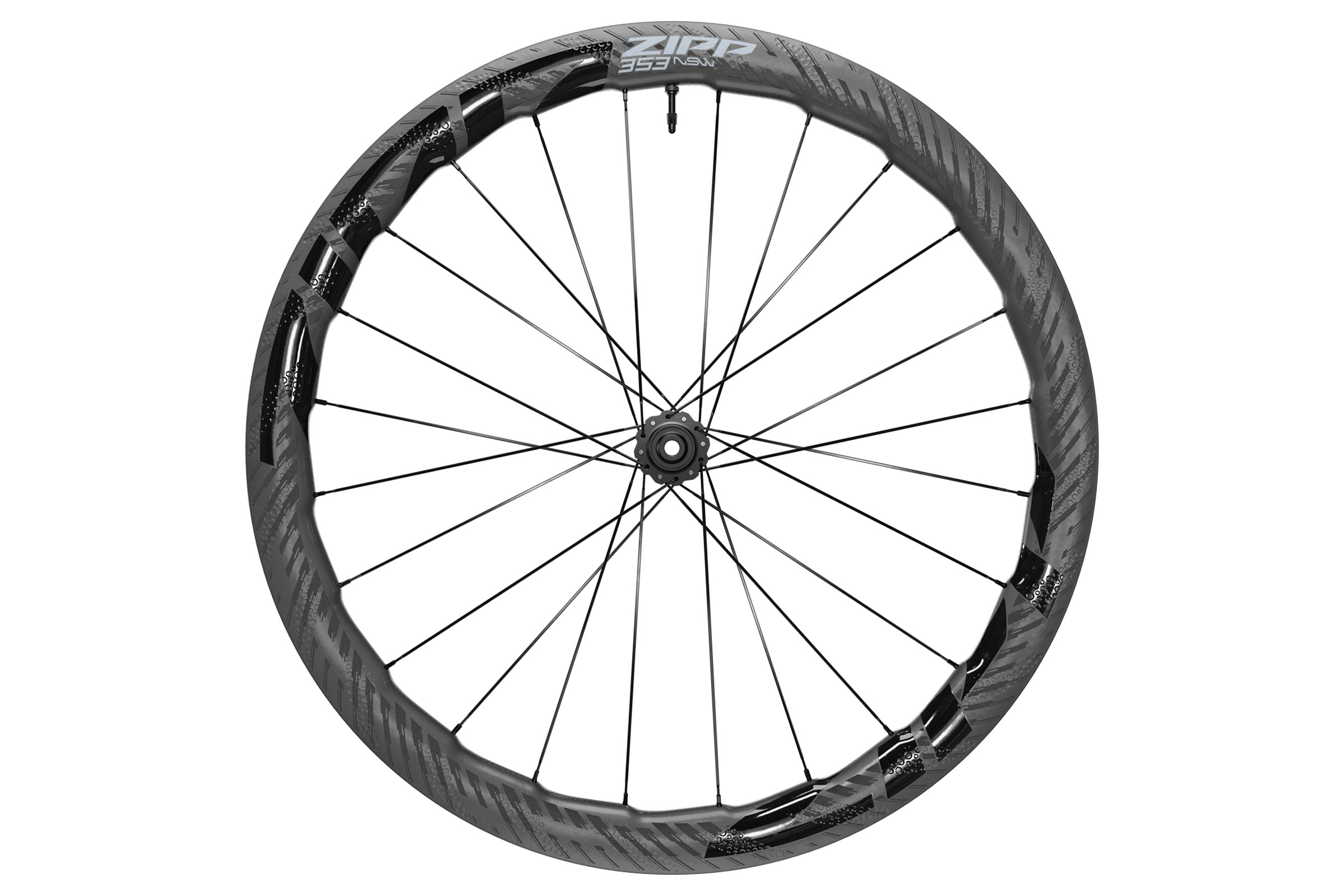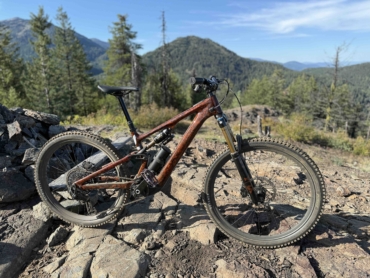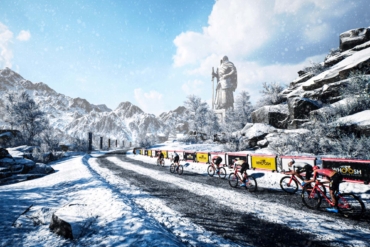Zipp announced the release of the hallmark wheelset in its 303 lineup in April — the 353 NSW Disc Brake. The wheelset possesses all the technical goodies, but it comes at an astronomical cost of $4,000 per set.
Since May, I’ve been testing the Zipp 353 NSW on a Trek Emonda. I’ve been impressed by the class-leading low weight and the qualities expected from a high-end carbon road wheel.
But the factor that surprised me the most is the seemingly insane low air pressure SRAM recommends for my weight and setup: less than 60 psi! This pressure seems absurd to me, having come up with toe straps and tubulars, with clinchers sometimes inflated to 145 psi.
Read on to see how this lower pressure impacted my efficiency and whether you should consider investing (heavily) in this setup.
https://www.youtube.com/watch?v=iSSqCqjgdEY
Zipp ‘Total System Efficiency’
The Zipp 353 NSW touts a group of technologies dubbed Total System Efficiency (TSE) that addresses four speed barriers: wind resistance, gravity, rolling resistance, and vibration losses.
The 45mm deep rims, with Zipp’s Sawtooth rim shape and ABLC dimpling, address wind resistance. The sawtooth profile maintains the aerodynamic efficiency of the rim depth while simultaneously improving stability in crosswinds.

The Zipp 353 NSW is the brand’s lightest tubeless wheelset ever, with an incredible weight of 1,255 g per pair with a 12mm thru-axle and SRAM XDR freehub body.
But the stark difference between this premium wheelset and others is the 25mm internal width and hookless sidewall design. Both allow the use of wider tires while maintaining the correct tire-to-rim interface for aerodynamics and drastically lower air pressures.
Zipp 353 NSW Tubeless Wheelset Review
As a road racer that started in the ’80s, both the recommended tire width of 28c and air pressures below 60 psi (per the SRAM tubeless tire-pressure calculator) seemed anything but fast. I grew up racing on tubulars and race clinchers as narrow as 20c and pressures as high as 145 psi, both preached as avenues to speed.

Comfort wasn’t a consideration — ever. Stiff frame, stiff wheels, high pressure, and slim profiles were considered efficient. And anything adding comfort (like lower tire air pressure) was a detractor from the ultimate goal of speed.
The roads around my home in central Texas are almost all chip seal, and many of them are in desperate need of repair. I knew that the low tire pressures would be comfortable.
And, surprisingly, Zipp engineered even more radial compliance in the carbon layup. I doggedly assumed they would be super slow due to the higher rolling resistance and loss of power transfer from rim to road.
And the hookless sidewalls combined with the lower pressures had me somewhat worried that I could roll a tire off the rim under hard cornering. At the least, less than half my normal pressure would allow the tires to squirm while cornering or braking, eroding my confidence during either. Just 55 psi in the front — what was SRAM thinking?
It only took a few miles on the rolling hills and windy roads to make me eat my words. Yes, a big yes, to the incredible vibration-dampening qualities of the larger air volume and lower pressures afforded by the wide internal width. I am recovering from reconstructive wrist surgery, and nothing (even dirt biking) aggravates my wrist more than road cycling.
But not with the Zipp 353 NSW! With the recommended pressure and tire width, these wheels dissolved vibrations and attenuated square edges to an inexplicable degree.

Zipp’s research shows that this vibration dampening can save up to 50 W in rough conditions. So this isn’t an inconsequential gain limited to comfort. Further third-party testing demonstrated that wheel stiffness, in general, reduces speed. This paradigm shift goes against most of the marketing efforts of high-end carbon wheel manufacturers.
The additional tire compliance and contact patch yielded extreme confidence in corners, the opposite of what I assumed. I felt suctioned to the road, and chatter and chassis disturbances were minimal while leaned over.
High End in Every Way
The vibration loss component of Zipp’s TSE stole the show for the 353 NSW, but the wheels were exceptional in every other way.
The sub–1,300g weight of the set was apparent during accelerations. So was the rapid engagement of the Zipp Cognition V2 rear hub’s Axial Clutch. This added to the sensation of quick and seamless power delivery. And the wheels shaved weight off the already featherlight Trek Emonda SLR 9 eTap.
I couldn’t measure the aerodynamic efficiency of the Zipp 353 NSW. But the brand didn’t omit any of its trademark drag-cheating technologies.
In short, Zipp didn’t spare any effort or expense on the 353 NSW, all the way down to the direct print logos. But all this comes at a cost: an astronomical $4,000.

Conclusions
Who is the Zipp 353 NSW Disc Brake wheelset for? That’s a tricky question. Four grand is a lot for a bicycle, let alone wheels.
My take: The Zipp 353 NSW is for the road endurance cyclist that appreciates the nuances of cycling technologies and designs at the very tip of the spear. This cyclist is an early adopter of componentry that can even marginally improve speed because it adds to their enjoyment of long days on the road.
This rider thinks about what’s happening beneath them while riding, adding to the appreciation of engineering, design, and manufacturing.
And, finally, $4,000 isn’t going to break their bank.
Check Price at SRAM






